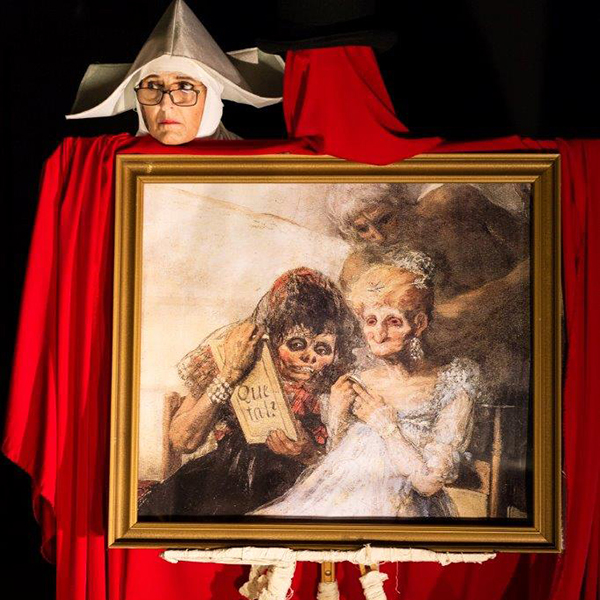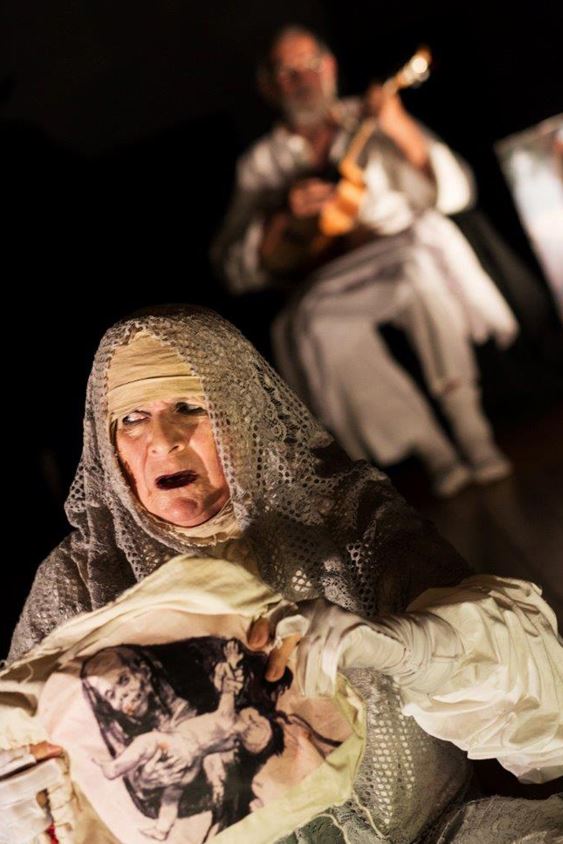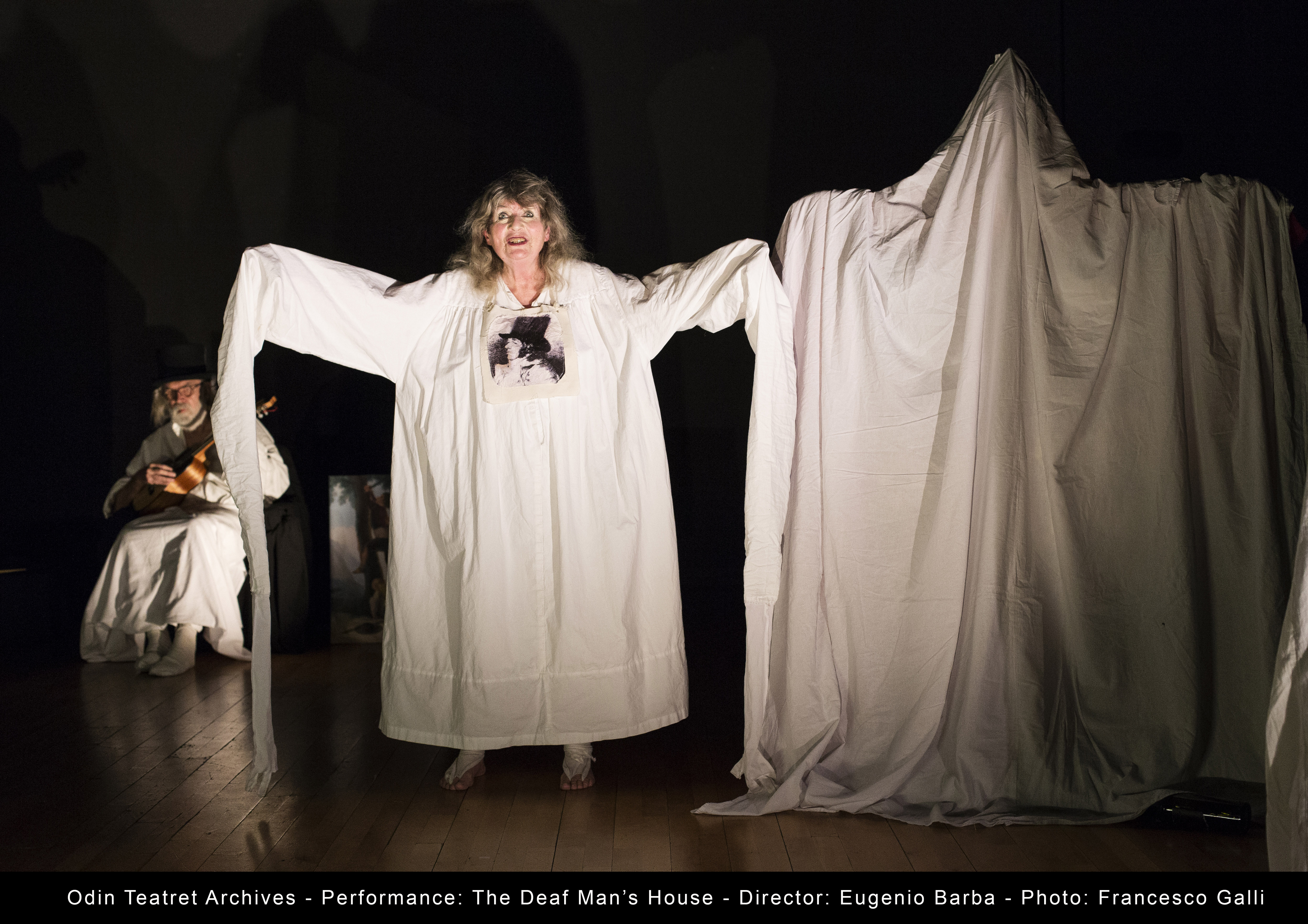A capriccio on Goya
We are in Bordeaux, in the house of a deaf man, Francisco Goya. It is the last night of his life. His lover for more than thirty years, the lively Leocadia Zorilla, unleashes her imagination and her memories.
Francisco Goya (1746-1828) is considered the most important Spanish painter and engraver of the end of the 18th and beginning of the 19th century. During his long career, he was a committed commentator and chronicler of his era. He died in exile in Bordeaux, in France.
PERFORMANCE
Actors: Else Marie Laukvik, Rina Skeel, Ulrik Skeel
Text: Else Marie Laukvik, Eugenio Barba
Stage design: Else Marie Laukvik, Rina Skeel
Stage design adviser: Jan de Neergaard
Assistant director: Rina Skeel
Director: Eugenio Barba
Duration: 60 min.
Language: Danish, English, Italian or Spanish
A 2019 production by Masakini Theatre (Kuala Lumpur, Malaysia), Nordisk Teaterlaboratorium / Odin Teatret (Holstebro, Denmark)
Premiere: 27 February 2020 in Holstebro, Denmark
FLAYER “The Deaf Man’s House – A capriccio on Goya”:
English>>>
Italiano>>>
Dansk>>>


A THEATRE CAPRICCIO
The Deaf Man’s House is a theatre performance-capriccio about the biography and works of the Spanish painter Francisco Goya. Goya’s life unfolded during the political upheavals in Europe at the end of the 18th century, in the Age of Reason and Romanticism, the Inquisition and the French Revolution. He lived in a world of eroticism, exile and physical mutilation due to the total deafness that struck him at the age of forty-six.
The capriccio is an artistic genre which developed in the sixteenth century in music, architecture and painting. The German composer Michael Praetorius (1571-1621) called it “a kind of improvised fantasy gliding from one theme to another”. J. S. Bach (1685-1750) named Capriccio a composition where the various parts, freely combined, expressed the longing for his far away brother. Particularly appreciated were the 24 Capricci by Niccolò Paganini who inspired Liszt, as well as those composed by Beethoven and Mendelssohn.
In architecture the capriccio is “a folly to the eyes of the viewer”. It is an extravagant building, designed more as an artistic expression than for practical purposes, often in order to appear as a ruin. The building has no aim other than to be an ornamental object, created or commissioned for pure pleasure.
In painting the term capriccio is given to imaginative drawings, far from the predominant themes of the time. Artists like Callot, Piranesi, Tiepolo, Watteau, Guardi and Goya made famous this way of portraying reality. In Venetian painting of the 18th century the capriccio is the art of composing a landscape through the free combination of real and fantastic architectural elements, ruins from antiquity and contemporary aspects.
The Deaf Man’s House is a theatre capriccio on Goya. Themes from his biography and paintings are transformed by the art of the actor into a flow of physical decadence and creative vitality, greed for prestige, squandering of wealth, selfishness, inventiveness, passion and frivolity. It is Goya’s young lover who describes her life with the great artist. Her images, memories and comments conjure up the mystery of Art whose cruel truth walks mockingly over the dead.
Eugenio Barba
Photo Gallery
These photos can be used for free only in connection with articles, press announcements or essays about Odin Teatret’s activities on tour and in Holstebro.
Some photos are in low resolution. Please contact Odin Teatret odin@odinteatret.org if they are needed in high resolution.
The mention of the photographer and the source is obligatory. The photographer’s name and other information can be found underneath each photograph.
For other uses, please contact Odin Teatret or the photographer for authorisation.





















